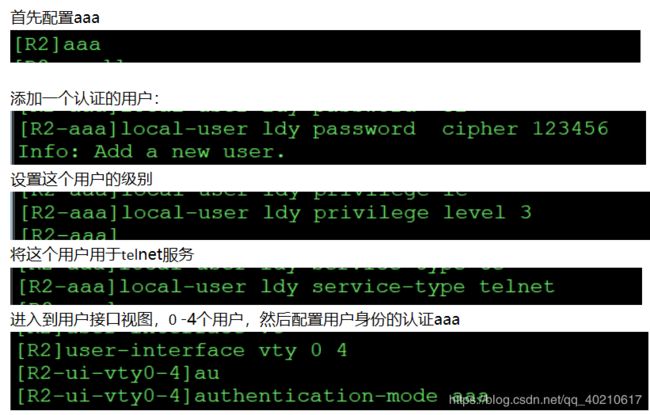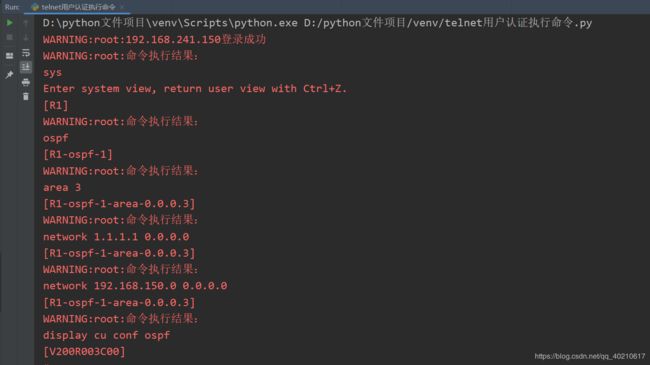Python3+telnetlib实现连接本地ENSP中的路由器,一次执行多条命令 (NetDevOps基础)
热爱路由交换以及运维技术的交流可以加QQ群:532593532(非水友群)!!欢迎大佬的加入!!!欢迎热爱技术的你!!!
首先需要在ensp中打开一台路由器,将ip地址配置完成后,可以进行桥接IP地址,也可以直接使用127.0.0.1然后端口号自己查看
方法一:
使用NAT模式,那么电脑本地就可以直接访问192.168.241.250
方法二:直接本地使用127.0.0.1 2000端口进行连接
然后就可以去pycharm中执行脚本
import logging
import telnetlib
import time
class TelnetClient():
def __init__(self,):
self.tn = telnetlib.Telnet()
# 此函数实现telnet登录主机
def login_host(self,host_ip,username,password):
try:
# self.tn = telnetlib.Telnet(host_ip,port=23)
self.tn.open(host_ip,port=23)
except:
logging.warning('%s网络连接失败'%host_ip)
return False
# 等待login出现后输入用户名,最多等待10秒
self.tn.read_until(b'login: ',timeout=10)
self.tn.write(username.encode('ascii') + b'\n')
# 等待Password出现后输入用户名,最多等待10秒
self.tn.read_until(b'Password: ',timeout=10)
self.tn.write(password.encode('ascii') + b'\n')
# 延时两秒再收取返回结果,给服务端足够响应时间
time.sleep(2)
# 获取登录结果
# read_very_eager()获取到的是的是上次获取之后本次获取之前的所有输出
command_result = self.tn.read_very_eager().decode('ascii')
if 'Login incorrect' not in command_result:
logging.warning('%s登录成功'%host_ip)
return True
else:
logging.warning('%s登录失败,用户名或密码错误'%host_ip)
return False
# 此函数实现执行传过来的命令,并输出其执行结果
def execute_some_command(self,command):
for i in range(len(command)):
# 执行命令
self.tn.write(command[i].encode('ascii')+b'\n')
time.sleep(3)
# 获取命令结果
command_result = self.tn.read_very_eager().decode('ascii')
logging.warning('命令执行结果:\n%s' % command_result)
# 退出telnet
def logout_host(self):
self.tn.write(b"exit\n")
if __name__ == '__main__':
host_ip = '192.168.241.150'
username = 'ldy'
password = '123456'
command = ['sys','ospf','area 3','network 1.1.1.1 0.0.0.0','network 192.168.150.0 0.0.0.0','display cu conf ospf']
telnet_client = TelnetClient()
# 如果登录结果返加True,则执行命令,然后退出
if telnet_client.login_host(host_ip,username,password):
telnet_client.execute_some_command(command)
telnet_client.logout_host()
执行结果如下:




